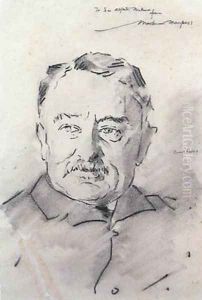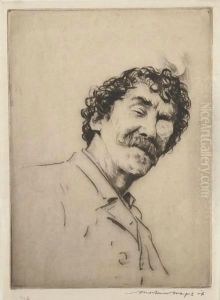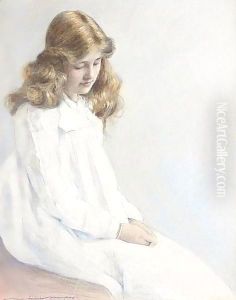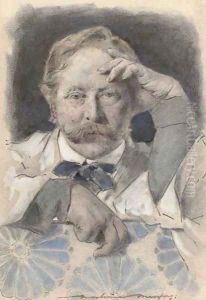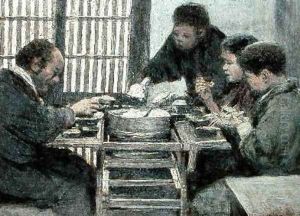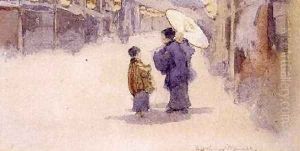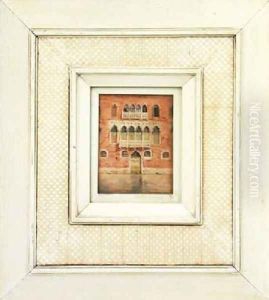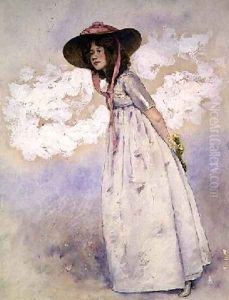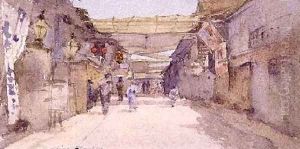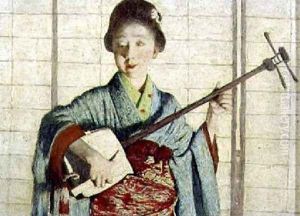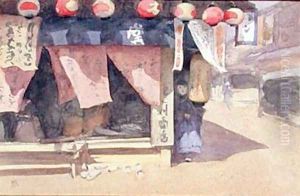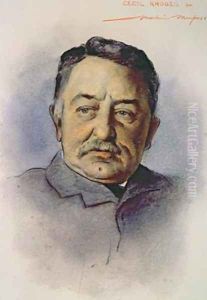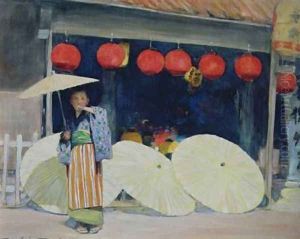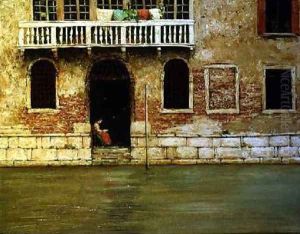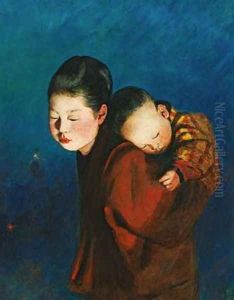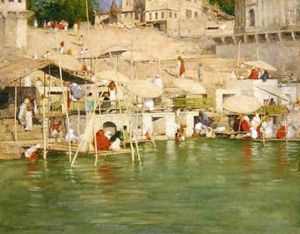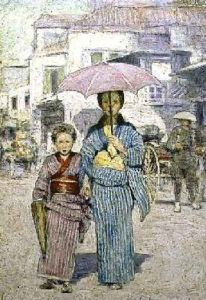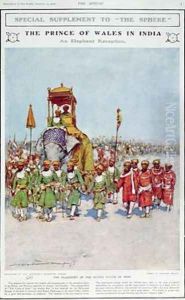Mortimer Ludington Menpes Paintings
Mortimer Ludington Menpes was born in Port Adelaide, South Australia, in 1855. He moved to London at a young age, where he would become a significant figure in the British art scene of the late 19th and early 20th centuries. Menpes was a versatile artist, known for his work as a painter, etcher, and printmaker. He was particularly renowned for his portraits, landscapes, and depictions of international scenes, which were influenced by his extensive travels.
Menpes received his artistic training at the South Kensington School of Art, where he developed a foundation in the techniques that would characterize his work. He was heavily influenced by James McNeill Whistler, under whom he briefly studied. This influence is evident in Menpes's attention to the harmony of color and composition, traits that he admired in Whistler's work. Despite their eventual personal and professional fallout, Whistler's influence remained a significant aspect of Menpes's artistic development.
Throughout his career, Menpes exhibited his work widely, including at the Royal Academy in London and in various exhibitions around the world. His travels to Japan in the late 19th century had a profound impact on his art, leading to the creation of a series of works that reflected the influence of Japanese aesthetics on Western art, part of the Japonisme movement. These works were celebrated for their delicate precision and the way they incorporated aspects of Japanese art, such as the use of space and light, into European artistic traditions.
Menpes was also an accomplished author and illustrator, producing numerous books that detailed his travels and artistic experiences. These publications often featured his own illustrations and offered insights into the cultures and landscapes he encountered, making significant contributions to the field of travel literature.
In addition to his artistic pursuits, Menpes was involved in the design and decoration of his home in Kensington, which became a showcase for his fascination with Japanese art and design. He hosted exhibitions and gatherings that were attended by notable figures of the era, further establishing his reputation as a central figure in the cultural life of London.
Mortimer Menpes died in 1938, leaving behind a legacy that was marked by his contributions to the world of art and literature. His work continues to be celebrated for its diversity, ranging from captivating portraits to intricate landscapes, and for the unique blend of Eastern and Western artistic traditions that he championed throughout his career.
